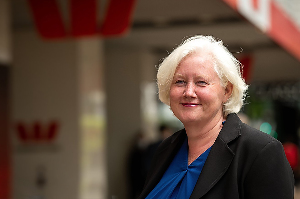The number of properties sold across the country fell from 5,674 in September 2017 to 5,506 in September this year – 168 fewer properties.
Not only was this a year-on-year decrease of 3.0% but it is the lowest sales volume for the month of September since September 2011.
In Auckland, the number of properties sold was down by 2.1%, or 35 fewer properties, from 1,651 in September 2017 to 1,616 in September 2018.
Further, around the country 12 out of 16 regions saw a fall in volumes with six of those regions experiencing double-digit decreases.
Northland (down 21.9%), Gisborne (down 21.7%) and the West Coast (down -18.9%) saw the biggest falls in sales.
REINZ chief executive Bindi Norwell put the decline in sales down to the low number of listings in July.
“Traditionally there is a lag of about six weeks between significant movements in listings and sales results.
“With July’s listings down by 5.4% year-on-year and an all-time low level of listings in seven regions, it’s little wonder that September’s sales volumes were so low.
“There simply weren’t as many properties for sale resulting in a very quiet start to spring.”
However, August and September’s listing numbers were up by 0.1% and 11.7% respectively, so it is expected that October and November’s sales volumes will be much stronger, she says.
While sales volumes may have been down in many parts of the country, the reverse was true from a price perspective.
They were Gisborne (up 26.9% to $342,500), Nelson (up 23.1% to $592,000), Manawatu/Wanganui (18.9% to $321,000), and Northland (up 12.2% to $505,000).
Nationally, median house prices across New Zealand increased by 5.9% year-on-year to $556,000 in September 2018, as compared to $525,000 in September 2017.
But Auckland’s housing market continued in a now predictably stable pattern, with a median price of $850,000 the exact same price as September last year.
Norwell says that with population growth and demand for properties continuing to exceed the supply of housing stock, prices are likely to continue increasing in the short to medium term.
“In fact, new research issued by AUT earlier this week suggested that at our current rate of supply we won't reach demand until the mid-to-late 2020s.
“This means that price pressure could well be an issue for some time – particularly in our more densely populated cities.”
In the case of Auckland, the median house price has hovered around the $850,000 mark for 18 months now, she adds.
“This incredibly stable market is positive for first time buyers and investors, buyers and sellers too, as it means that everyone knows what the market is doing.”
For ASB economist Kim Mundy, the data shows Auckland housing market remains dead in the water, with soft sales activity continuing despite growing inventory levels.
“Uncertainty and affordability constraints have slowed the Auckland market after a prolonged period of strong house price growth. For the first time in many years, Auckland is a buyers’ market.”
On the other hand, it appears that there is still some heat left in provincial New Zealand as these markets continue to play catch up with Auckland, she says.
“Time will tell whether the recent jump in inventory levels in the regions will translate to higher sales turnover and further price increases.
“However, outside of these near-term divides, we continue to expect a general softening in the housing market as provincial New Zealand price growth catches up with Auckland.”




Comments
No comments yet.
Sign In to add your comment